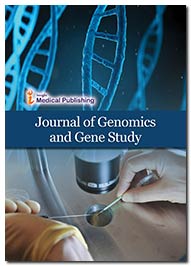RNA sequencing in degraded tumor RNA samples: Two natural enemies finally reconciled
Michael Bonin
University of Tuebingen, Germany
Received: June 06, 2022; Accepted: June 13, 2022; Published: June 20, 2022
Abstract
Carved in stone, painted on canvas or scratched in vinyl expressions of human thoughts and feelings have been conserved over generations and been ever since an easily accessible treasure of knowledge and inspiration. When it comes to expression of genes conserved in FFPE or degraded RNA samples, things are different. Given the degradation of RNA due to fixation or other circumstances to shreds and pieces, the scientific treasure of potential insights and discoveries is everything but easy to unearth. Unfortunately, classic approaches often suffer from high sample amount input requirements and highly variable results. These hamper immensely the effective gene expression analysis of challenging FFPE or degraded but nevertheless precious and irreplaceable RNA samples. In the current study strongly degraded total RNA samples from stomach endoscopies of patients with gastric carcinomas should be analyzed for gene expression changes between tumor regions and normal tissue regions. To overcome the described problems, we established a new RNA Sequencing Service workflow. The library preparation with the Illumina TruSeq RNA Accesskit served as a key step especially addressing low-quality RNA samples and requiring input amounts of as little as 20-100 ng. RNA was evaluated for usability by the newly established Illumina DV200 quality parameter. The subsequent stranded RNA Access library preparation included a sequence-specific enrichment technology. This enables reproducible transcript capture not compromised by poly-A bias using >4, 25000 probes, interrogating >2,10000 targets of 21,415 genes of hg19 and thus covering 98.3% of RefSeq. By this approach, variability was diminished while required sequencing depth was greatly reduced. The IMGM´s FFPE RNA Sequencing Service was expanded by 275bp paired-end sequencing on the NextSeq500 platform and a comprehensive data quality control and analysis on the CLC Bio Genomic Workbench.Sequencing resulted in a high amount of high quality paired end reads and a very high portion could be mapped to the human genome regardless the level of degradation of the underlying RNA samples. The comparison of the resulting data with data from two of the samples which underwent a classical mRNA library preparation protocol showed that the used TruSeq RNA Access protocol enhanced the amount of mappable reads and diminished sequencing of intergenic regions. Thereby paired-end reads could be concentrated on meaningful gene regions in high sequencing depth finally enhancing the focus for detection of significant differential expression levels and fusion genes.Thus, the used approach of the IMGM´s FFPE RNA Sequencing Service powered by the Illumina TruSeq RNA Access kit serves as an efficient step towards gaining so far hidden transcriptomic insights in difficult to access RNA samples
Open Access Journals
- Aquaculture & Veterinary Science
- Chemistry & Chemical Sciences
- Clinical Sciences
- Engineering
- General Science
- Genetics & Molecular Biology
- Health Care & Nursing
- Immunology & Microbiology
- Materials Science
- Mathematics & Physics
- Medical Sciences
- Neurology & Psychiatry
- Oncology & Cancer Science
- Pharmaceutical Sciences
